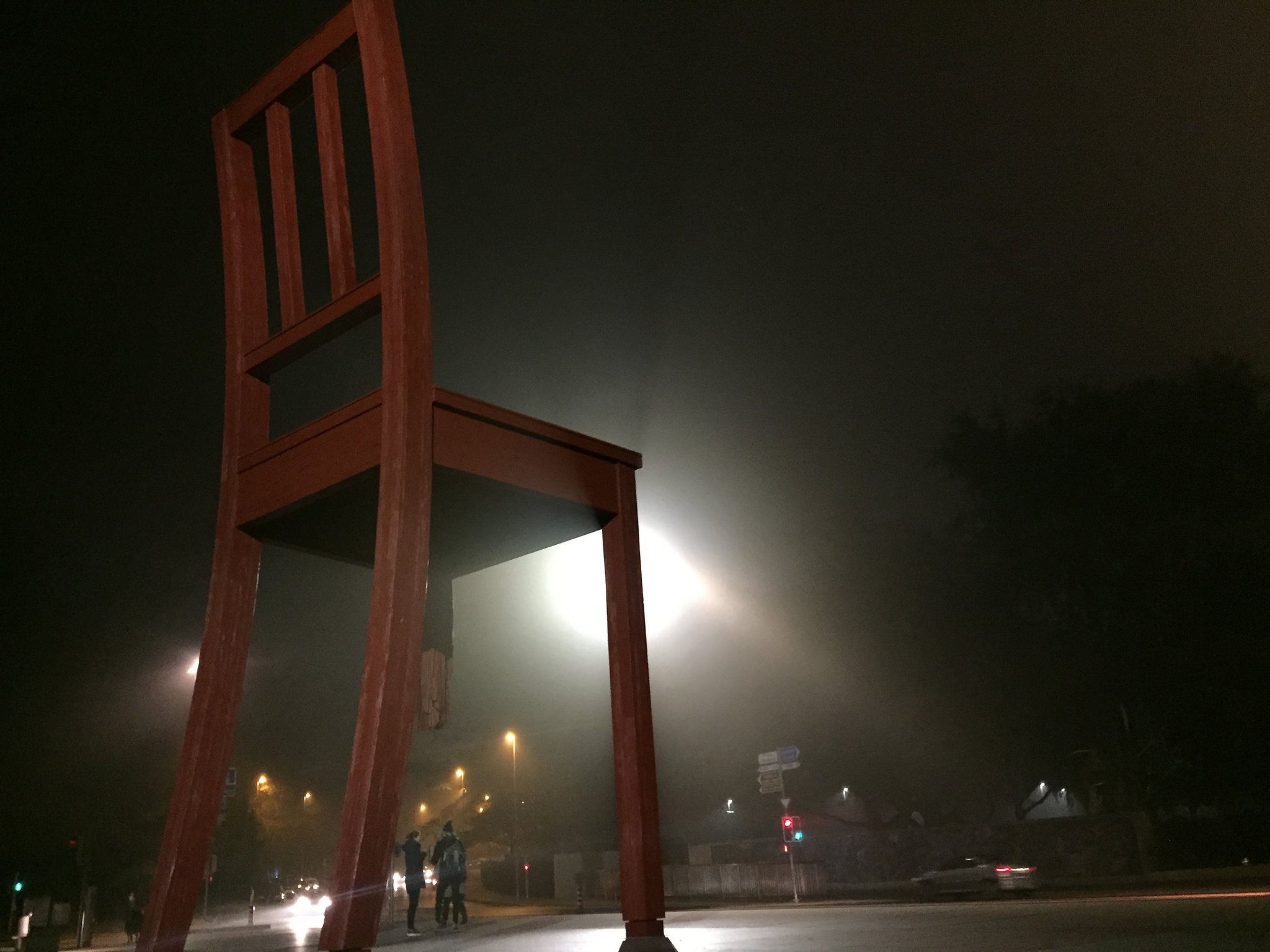
Moving forward in 2016

The most significant development for the Campaign to Stop Killer Robots in 2016 came at the very end of the year when countries agreed to formalize and dedicate more time to their deliberations on lethal autonomous weapons systems. The move came after states held informal discussions on the matter since 2014. The final document of the five-year Review Conference of the Convention on Conventional Weapons (CCW) contains the decision to establish a Group of Governmental Experts to meet over 10 days in 2017 and then report back to the CCW’s annual meeting on 22-24 November.
States proposed the recommendation to formalize the CCW process during the third informal meeting on lethal autonomous weapons systems held at the UN in Geneva on 11-15 April 2016. More than 90 countries attended this meeting that Ambassador Michael Biontino of Germany chaired for the second year in a row.
The Russian Federation was the only country to explicitly say no to formalizing the process, while dozens of states expressed support for the move. Throughout the year, Russia objected to the creation of a Group of Governmental Experts, raising “major doubts” about the need to do so now and arguing that it was “premature” when there is not yet an agreed-upon definition of lethal autonomous weapons systems. Campaign coordinator Mary Wareham spoke in Moscow at the end of September to respond to Russia’s concerns and make the case for a Group of Governmental Experts. At the Review Conference, Russia relented and the CCW process was formalized.
During 2016, the group of nations calling for a ban on fully autonomous weapons doubled from nine to 19 states. Algeria, Chile, Costa Rica, Mexico, and Nicaragua called for a ban on fully autonomous weapons during the CCW meeting on killer robots in April, while Argentina, Guatemala, Panama, Peru, and Venezuela endorsed the ban call during the CCW Review Conference in December. Pakistan, Cuba, Ecuador, Egypt, and the Holy See forcefully articulated their strong desire for a ban throughout the year, after being the first countries to call for one.
Another noteworthy development came in December when China for the first time shared its views on fully autonomous weapons in a position paper prepared for the Review Conference. China found “uncertainties” in the adequacy of international law to deal with the challenges raised by fully autonomous weapons and expressed support for the development of a legally-binding instrument. It cited the relevant precedent of the 1995 CCW protocol that preemptively banned blinding lasers.
China is the first permanent member of the UN Security Council to find that new international law is required on fully autonomous weapons. France, UK, and the US all supported the move to establish the Group of Governmental Experts, but remain unambitious in their overall goals for the process by proposing a focus on sharing best practices and greater transparency in legal reviews pertaining to the development and acquisition of new weapons.
Concerns over killer robots were first debated in a multilateral forum in May 2013 when the Special Rapporteur on extra-judicial, summary or arbitrary executions Professor Christof Heyns of South Africa presented the Human Rights Council with his first report on the matter, which recommended an immediate moratorium on development. In February 2016, Heyns called for a preemptive ban in another report prepared with the Special Rapporteur on the rights to freedom of peaceful assembly and of association. That report found that: “Autonomous weapons systems that require no meaningful human control should be prohibited” and proposed that “where advanced technology is employed, law enforcement officials must, at all times, remain personally in control of the actual delivery or release of force.”
In August 2016, Dr. Agnes Callamard of France replaced Heyns as the Special Rapporteur on extra-judicial, summary or arbitrary executions. Campaigners met with Callamard in December 2016 during the CCW Review Conference.
In March, the ethics council of the $830 billion Norwegian Government Pension Fund announced its intent to begin monitoring companies investing in the potential development of fully autonomous weapons systems. Council chair Johan H. Andreson described the initiative as “a statement of fair warning” or “heads-up” that such investments would likely be contrary to the fund’s investment policies and ethical guidelines.
Numerous workshops, conferences and public events on fully autonomous weapons took place in 2016 in cities including Amsterdam, Berlin, Copenhagen, London, Moscow, New Delhi, Oslo, Ottawa, Stockholm, Tokyo, Washington DC, and Wellington. Campaigners and groups such as DeepMindAI made submissions to parliamentary hearings on artificial intelligence. The International Committee of the Red Cross (ICRC) convened its second experts meeting on autonomous weapons systems on 15-16 March, attended by representatives from 20 countries as well as campaign members. In January, a panel at the World Economic Forum in Davos, Switzerland on “what if robots went to war?” marked the second year in a row that killer robots have been discussed in-depth at the forum.
Media interest in the challenges posed by fully autonomous weapons continued to build and deepen in 2016. In August, BuzzFeed published an 8,000-word long-read by Sarah Topal, providing an unprecedented profile of the Campaign to Stop Killer Robots, the diplomatic process at the CCW, and state of development of autonomous weapons. Heather M. Roff of Arizona State University published the first publicly-available dataset tracking military autonomy, identifying 284 weapons systems with autonomous features. The unprecedented use by Dallas police of a remote-controlled explosive ordnance disposal robot to kill a man attracted worldwide media attention.
The first meeting of the Group of Governmental Experts on lethal autonomous weapons systems will be held at the UN in Geneva on either 24-28 April or 21-25 August 2017 and chaired by Ambassador Amandeep Singh Gill of India. A final decision on the date is expected by the end of January. The second meeting of the Group of Governmental Experts will be on 13-17 November, the week before the annual meeting of high contracting parties.
In 2017 the Campaign to Stop Killer Robots aims to intensify its efforts in national capitals to increase understanding of the challenges posed by fully autonomous weapons as well as secure support for the call for a preemptive ban. Since 2013, a total of 78 countries have elaborated their views on fully autonomous weapons for the first time, including twelve during 2016: Bangladesh, Cameroon, Estonia, Hungary, Latvia, Republic of Moldova, Montenegro, Panama, Peru, Philippines, Slovakia, and Slovenia.
Our campaign coordinator and expert members from Africa, Latin America, the Middle East and North Africa, Asia, and elsewhere stand ready to undertake speaking engagements to increase awareness and spark action. We are sincerely grateful to the donors that supported out campaign’s work in 2016 and welcome further support in 2017 as we step-up our actions aimed at securing support for a ban on fully autonomous weapons. Please join us in this effort.
For more information, see:
- Our Report on Activities at the third CCW experts meeting held April 2016.


